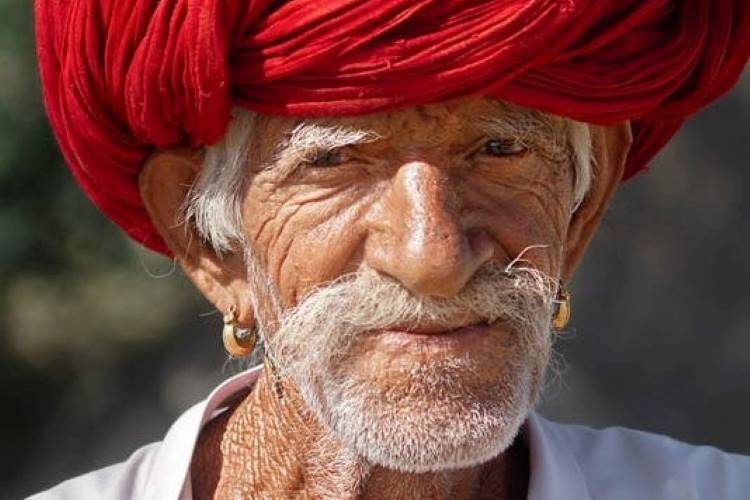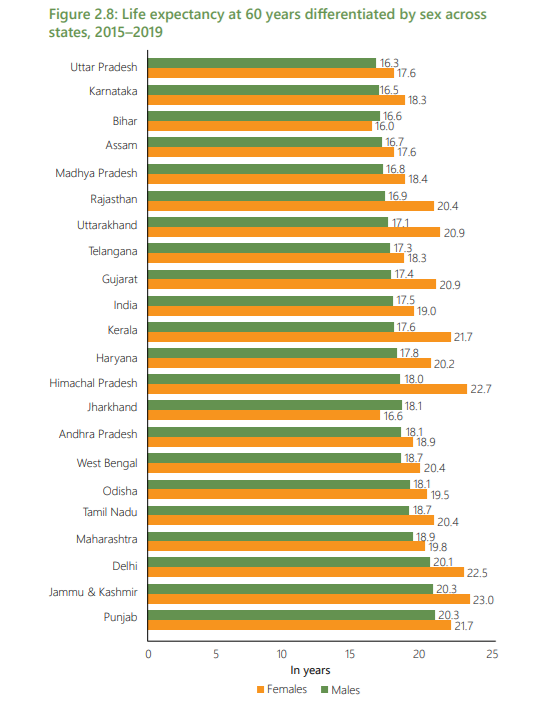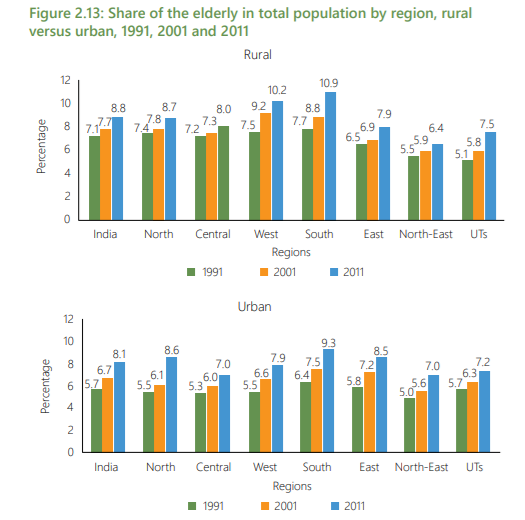
Economists often discuss the concept of an optimum population, where the number is ideally suited to utilise available resources efficiently. Determining this optimum level becomes exceedingly complex due to variations in technology, skills, health, education, infrastructure, and, most importantly, the size and composition of the population. Many developed countries grapple with issues related to an ageing population, marked by declining fertility rates, increased longevity, and a growing need for geriatric healthcare.
The ageing of the population is an irreversible and inevitable reality, driven by advancements in healthcare, longer life expectancy, and declining fertility rates. This demographic shift is particularly pronounced in the 60-and-above age group, which is growing faster than the overall population worldwide.
READ I India must step up quality of education to unlock demographic dividend
Policies for ageing India
According to the UNFPA’s India Ageing Report 2023, Asia is expected to see a significant increase in the proportion of elderly people, rising from 13.7% to 35.7% between 2022 and 2050. Japan, for instance, is projected to have 43.7% of its population aged 60 and above by 2050, while other countries like the Republic of Korea, China, India, Bangladesh, Bhutan, Sri Lanka, and the Maldives will also see substantial increases in their elderly populations during this period. India’s aging pace is relatively moderate, with an estimated 20% of the population being elderly by 2050 and further rising to 36.1% by 2100, particularly in states like Himachal Pradesh, Punjab, and those in the southern region.
Additionally, there is a growing demographic of people aged 80 and above, projected to increase by approximately 279% between 2022 and 2050, primarily comprising widowed and highly dependent elderly women. Women, on average, have a longer life expectancy at ages 60-80 compared to men, with variations among states and union territories. This demographic shift is accompanied by visible changes in sex ratios within the aged population, which contrasts with stagnating sex ratios in the general population.


An analysis of elderly population proportions at the state level in 2001 and estimates for 2021 reveals that Kerala had the highest proportion in both years, followed by Tamil Nadu, Himachal Pradesh, Punjab, Andhra Pradesh, and Odisha, among others. Furthermore, the old age dependency ratio, reflecting the ratio of senior citizens to those in the productive age group of 15-59, has steadily increased from 10.9% in 1961 to an estimated 20.11% in 2031.
Despite India’s projected aging population reaching 20% in 2050, it currently hosts around 149 million people aged 60 and above as of August 2022, constituting approximately 10.5% of the population. Southern states like Kerala and Tamil Nadu, along with northern states like Himachal Pradesh and Punjab, house a significant portion of the elderly population in India.
However, this demographic shift brings its own set of challenges. Official data for 2019 indicates varying rates of crimes against senior citizens across states, with Delhi, Gujarat, Chandigarh, and Madhya Pradesh reporting higher crime rates, while Assam and Jammu and Kashmir recorded the lowest. Crimes such as murder, robbery, burglary, and fraud were the most common offenses against senior citizens. Neglect by family members, boredom, insecurity, alcohol-related issues, and family violence often contribute to violence among the elderly. The elderly, particularly women, may suffer neglect and indifference from their children, leading to a traumatic experience in their later years.
As the elderly population, especially very old women, continues to grow, appropriate policies and interventions are needed to ensure sustainable economic growth, poverty eradication, and reduced inequalities. Coordination between central and state governments, fiscal measures, and the involvement of non-governmental organizations and non-resident Indians can contribute to the welfare of the elderly population and mitigate the challenges associated with an aging society.
Ravindran AM
Ravindran AM is an economist based in Kochi. He was the head of Department of Economics at the Central University of Kerala. He has also served as Associate Professor, Directorate of Higher Education, Puducherry.
